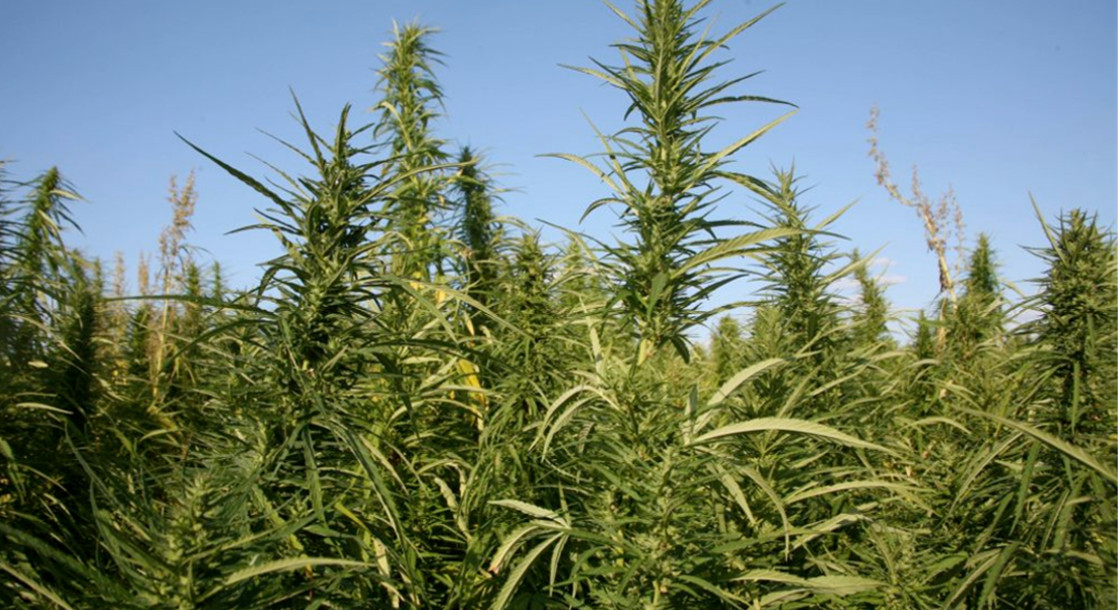Studies have shown that weed could help cigarette smokers kick the habit. It’s fitting, then, that cannabis just got one corporation to switch their operations from tobacco cultivation to pot; or more precisely, to hemp.
For those keeping score at home, hemp is basically weed that won’t get you high. It contains almost no THC, and it’s been used for making textiles, ropes, paper, and even food for thousands of years. Thanks to the 2014 US Farm Bill, it’s now legal to grow in the US, so long as farmers follow their state’s pot laws.
The company switching from tobacco to hemp is 22nd Century Group, a biotech firm based in New York. Valued at over $60 million, they’re certainly not just another little league pot shop.
Their claim to fame? Creating patented plants which thrive in Virginia’s old tobacco fields. Through a partnership with the University of Virginia (UVA), 22nd Century Group helped design over 50 kinds of tobacco, all genetically modified to be less addictive. Their special brand of smokes contains up to 97 percent less nicotine than most cigarettes, while still smelling and tasting as rich as a Red.
Now 22nd Century and UVA are leaving the tobacco game behind, applying all the tools, tricks, and approaches they used with tobacco to customize hemp for industrial, agricultural, and medical use. Instead of tweaking nicotine levels, they want to control cannabinoid production in the cannabis plant, specifically of THC.
One of their first goals is to design hemp that consistently fails to pump out marijuana’s primary psychoactive cannabinoid. Growing cannabis without THC is actually quite difficult – weed wants to make THC, especially in response to environmental stresses. (Funny how both humans and cannabis need THC when we get stressed.)
But that’s not all. There’s over 100 other kinds of cannabinoids in hemp, including the much-sought-after CBD. Most hemp grown in the US isn’t grown for textiles or food – we prefer to import that stuff. Instead most American farmers cultivate hemp for its CBD, which can be extracted for use in oils, lotions, transdermal patches, tinctures, edibles, and a host of other non-psychoactive products.
CBN, CBG, CBC, THCV, and a host of other cannabinoids all offer medicinal benefits. Right now, if hemp farmers want to increase the levels of these other compounds, they must rely on traditional breeding methods (backcrossing), and a lot of blind luck. It could take several years to breed just one hemp plant with specific, commercially valuable cannabinoid ratios. It’s an expensive and time-consuming crapshoot, to say the least.
UVA and 22nd Century, however, don’t care to wait that long. By combining conventional breeding with some genetic engineering, they intend to accelerate this hemp-design process. However they may need Virginia’s weed laws to loosen up beforehand.
“If laws change in Virginia from simply research to allowing production and sales, then we would target [commercial production] in the next couple of years or sooner,” writes lead researcher Michael Timko in an e-mail to MERRY JANE. “We don’t want to provide growers with material that would not be productive or useful.”
Although 22nd Century and UVA will be one of the first groups to nab patents for hemp plants, they won’t be the first to file patents for cannabis in general. In 2013, BioTech Institute, based in California, filed America’s first tried-and-true marijuana patents in a 145-page document. BioTech’s proprietary strains, like the ones being investigated by Timko, are bred to churn out specific cannabinoid ratios.
And despite outcry (and even fake news) from marijuana activists, Monsanto does not appear to working on patented weed, nor does the notorious AgBio giant have any plans to fiddle with our favorite plant in the near future. For now, firms like 22nd Century are leading the way in hemp research and innovation.











